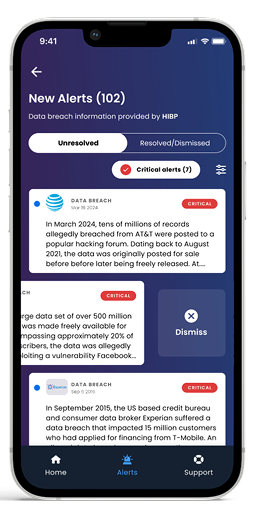
You can reset passwords, not DNA: What biotech cybersecurity findings reveal in 2025
When most organizations suffer a breach, the immediate response is to reset passwords, revoke credentials, or reissue access keys. In biotechnology, the consequences are far more severe.
Genomic data cannot be rotated or replaced. Once exposed, it's permanently compromised. In honor of Cybersecurity Awareness Month 2025, this article explores a growing body of evidence that shows how biotech platforms—some of which manage DNA sequences, biomarker profiles, and sensitive health records—are struggling with even basic cybersecurity hygiene.
Why biotech data is different
Unlike traditional SaaS providers, biotech firms handle data that sits at the core of human identity: DNA sequences, disease risk profiles, and mental health information. A single leak doesn’t just damage brand trust; it raises serious compliance questions under HIPAA, GDPR, and new frameworks for medical devices and diagnostics.
The permanence of genomic data makes it uniquely risky. Credit cards and passwords can be reset. Even Social Security numbers can be reissued in extreme cases. DNA, however, is immutable. For investors and regulators, this shifts security from an IT concern to a strategic business risk. Increasingly, cybersecurity maturity is part of due diligence alongside intellectual property and clinical breakthroughs.
What the latest cybersecurity research shows
A recent industry review of 50 biotech companies revealed more than 60 significant security issues, including exposed genomic data from over 6,000 users and health records for more than 300,000 patients—identified in under two hours per company without advanced exploitation techniques (Biotech Cybersecurity Report 2025).
The most common weaknesses included:
- Leaked credentials (36%)
- Insecure APIs (34%)
- Misconfigured cloud environments (20%)
- System information disclosures (50%+)
- Outdated software with known vulnerabilities (16%)
These are not exotic zero-days. They are preventable oversights. In some cases, unauthenticated APIs provided direct access to patient data. In others, hardcoded secrets were embedded in front-end code or staging environments left exposed online. The fact that such issues could be detected passively highlights how vulnerable these platforms are to both opportunistic attackers and well-funded adversaries.
The risks are not theoretical. The 2023 breach of consumer genetics company 23andMe exposed data from nearly 7 million users and highlighted how even small missteps in identity and access management can snowball into large-scale crises. Biotech companies today face the same or greater stakes.
Building a threat model for biotech
If biotech platforms are to manage this risk effectively, a structured threat model is essential. While every company has unique assets, a repeatable framework helps prioritize effort:
- Identify assets: DNA data, patient records, proprietary algorithms, and lab systems.
- Map the attack surface: APIs, cloud storage, lab equipment, partner integrations, and employee endpoints.
- Define threat actors: Cybercriminals, insiders with privileged access, and nation-states targeting intellectual property.
- Assess likelihood and impact: For example, misconfigured APIs are both highly likely and potentially catastrophic.
- Plan mitigations: Enforce API authentication and rate limiting, patch legacy systems, remove hardcoded credentials, monitor for known vulnerabilities, and integrate security testing directly into DevOps pipelines.
This structure is not unique to biotech. Financial services, SaaS, and healthcare organizations face similar challenges. The difference is that the consequences of failure in biotech extend beyond reputational loss to the permanent exposure of biological identity.
Strategic takeaways beyond biotech
The lessons here apply broadly:
- Hygiene matters most. Most exposures were preventable misconfigurations or outdated software, not advanced exploits.
- Compliance is not the ceiling. Passing an audit does not guarantee resilience. Controls must be continuous, adaptive, and integrated into the development lifecycle (NIST Cybersecurity Framework).
- Security affects valuation. For investors, hidden vulnerabilities can derail acquisitions, trigger fines, or erode market confidence as quickly as regulatory action.
- Trust is fragile. In biotech, a single breach can erase years of credibility. The same dynamic applies to finance, consumer tech, and any trust-driven sector.
Final thoughts
Because you can reset a password but not your DNA, biotech data stands apart as one of the most sensitive and highest-risk categories in the digital age. Recent findings indicate that the problem is not exotic security exploits, but rather the neglect of foundational controls.
For security leaders, the priority is disciplined execution of basics and embedding threat modeling into product design. For executives and boards, the challenge is to treat cybersecurity not as a checkbox but as a core business enabler.
The exposures uncovered across biotech should be a wake-up call for every sector that manages sensitive data—and their patients. Protecting trust requires moving beyond audits to systematic security practices and proactive consumer protection.

Stay protected with OmniWatch
Receive data breach alerts that notify you of potential security risks to your personal information, backed by up to $2 million in identity theft insurance
